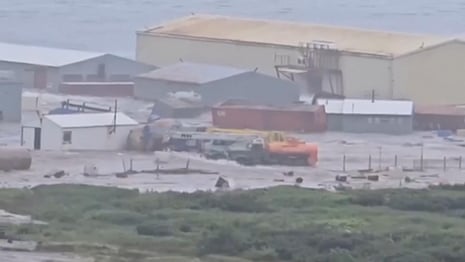A massive 8.8 magnitude undersea earthquake struck near Russia’s Kamchatka Peninsula on Tuesday, July 30, 2025, triggering powerful tsunami waves that swept across parts of Russia, Japan, the United States, and other Pacific nations, setting off widespread evacuation orders and emergency responses.
Russia: Towns swamped, residents evacuated
The quake’s epicenter was located southeast of Petropavlovsk-Kamchatsky at a shallow depth, intensifying its destructive force. In Severo-Kurilsk, waves reportedly surged between 3 and 5 meters, inundating streets and properties. Residents were swiftly evacuated as emergency crews responded to rising water levels and building damage. Minor injuries were reported, and authorities warned of continued aftershocks, some possibly exceeding magnitude 7.
Japan: Widespread alerts, bullet trains halted
Tsunami waves also reached northern Japan, particularly Hokkaido and coastal Iwate Prefecture, prompting the Japan Meteorological Agency to issue tsunami warnings and advisories for several prefectures. Waves measuring 30 to 40 centimeters were recorded, though feared larger surges led to mass evacuations affecting nearly one million residents in over 130 municipalities. Bullet train services were suspended, and air and sea transport experienced major delays. Japan’s nuclear facilities, including the troubled Fukushima plant, temporarily suspended operations but reported no damage.
Hawaii and U.S. West coast: Waves strike, warnings issued
In Hawaii, tsunami waves up to four feet were recorded, prompting emergency alerts and shoreline evacuations. Several flights were cancelled, and coastal roads closed as a precaution. On the U.S. West Coast, from California to Alaska, tsunami advisories were issued. Waves close to one meter struck parts of California, including Crescent City and Arena Cove, causing minor flooding in harbors but no reported casualties.
Pacific-wide alerts: Warnings from Asia to the Americas
Countries throughout the Pacific Rim, including Taiwan, Indonesia, the Philippines, New Zealand, Mexico, and island nations like Guam and the Solomon Islands, activated tsunami warning systems. In many coastal areas, residents were urged to move to higher ground or shelter inland. Officials anticipated surges between 0.5 and 1 meter, particularly in vulnerable low-lying zones.
Global coordination and ongoing risks
Emergency agencies across the affected regions coordinated via regional tsunami warning centers and satellite tracking. Authorities in Russia cautioned about aftershocks and potential secondary quakes. While early reports indicate no confirmed fatalities, the quake’s scope placed millions at risk and tested early-warning infrastructure across continents.
The event is already being described as one of the most powerful seismic events globally in recent years, and scientists are monitoring tectonic activity in the Pacific “Ring of Fire” for further disturbances.


